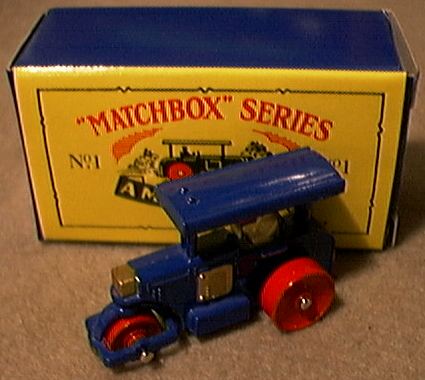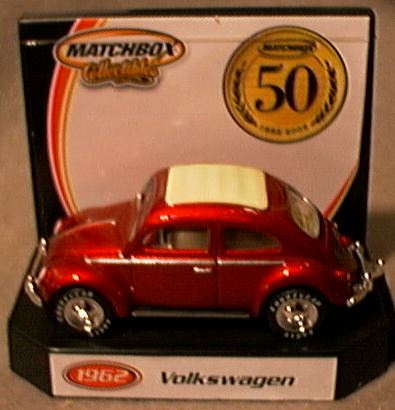The following editorial reflects the personal thoughts of Doug Breithaupt relating to our common hobby of miniature cars. It is intended to generate discussion relating to 'Tales of Toy Cars'. Your letters are welcome and may be submitted via e-mail. 2003 is the real 50th anniversary of small-scale diecast cars |
| "During 1953, Jack Odell began designing smaller scale toys... These
toys were enormously successful and were continued to become the 1-75 series,
a concept unchanged to this day! The year 1953 was also the beginning of
the 1-75 series and "Matchbox" received its name. In 1954, Matchbox
produced eighteen toys which were distributed by Moko. The trademark "Matchbox"
had been registered in 1953." The Encyclopedia of Matchbox Toys, Charlie Mack (1997) While the marketing boys at Mattel decided that they would make 2002 the 50th anniversary of Matchbox, the real anniversary year is clearly 2003 (the guys at General Motors had the same problem with their math regarding Corvette). Then again, Mattel has not done much to justify themselves as the keeper of the Matchbox flame. Regardless, the rest of us know that this is the year we look back at the first half-century of 1:64 scale and look forward to the next 50 years. The last 50 years have been well-reviewed in this publication and many others and will continue to be a focus for generations to come. Each generation seem to best remember the toys from their initial 'play-years', between the ages of 5 and 15. For me this would be 1962-1972. Perhaps that explains my fascination with these little cars as these were some of the most active years in the formation of the industry. It is not however the first 50 years that I wish to address, but the next 50 years of our hobby. Where will 1:64 scale diecast cars be in 2053? Some might argue that toy cars will have gone the way of the toy horse and buggy by 2053. Will the automobile as we know it still exist? Certainly, methods of personal-transportation will exist. Toy makers will continue to create miniature examples of whatever vehicles are used for personal, commercial or sporting purposes. Perhaps the idea of a static, non-powered diecast toy will also be antiquated in 2053. Will the vast majority of toys become interactive, chip-carrying devices? Certainly toy cars can move this direction as displayed by the tiny remote-control models that were the fad for this past holiday season. I doubt that miniatures, even static ones will ever be completely out of style. At the same time, who among us have not wished these little cars could be more realistic? Opening trunks, hoods and doors with the occasional turning wheels or adjustable suspension have been the highlights of interactive 1:64 scale diecast. Tiny batteries have brought lights, motor sounds and sirens but these have not moved into the collector arena with any success. I think there is still much room for growth here. How about a chip that provides working front, tail and interior lights when the doors open? It could also provide a true recording of the accurate engine noise for the car. Which company will provide the first working convertible top for 1:64 scale? How about a tiny camera in the car that shows the view from behind the wheel and can interact with your computer? With virtual technology, perhaps we could get behind the wheel of our favorite diecast car. It is easier to see these developments for 1:18 scale than for 1:64 but who knows? As computer design is used for more and more modeling, our toy cars should be able to look more realistic. Pad-printed tampos are already providing amazing detail. The age of clumsy tampos and stick-on decals is likely gone for good. Diecast cars and slot cars have long shared the same scale but little else. Crude efforts have been made to allow toy cars to work on an electric race track but much more could be done. Light-weight alloys could replace today's heavier metals. Drive-by-wire technology could allow for more realistic control and take the slot out of the slot car. With virtual technology putting you into the driver's seat and those same mini-cams, we could be transported to Indy, Monte Carlo or Le Mans, along with our little cars. After 50 years, small-scale diecast cars are as strong as they have ever been in the marketplace. It is unlikely that Jack Odell or any other diecast pioneer envisioned what the industry and hobby have become today. If I'm still around to play with toy cars at the age of 95 (and I plan to be), I'll have to look back and see how the second 50 years compare to the first 50. I hope you're along for the ride. Share your thoughts on this topic with me and I'll put it in the next issue. Send to: doug@breithaupts.com. |
 It all started in 1953 (replica of original Matchbox No. 1 from 1992)  '62 VW Beetle - 50th Anniversary Model 2002 |